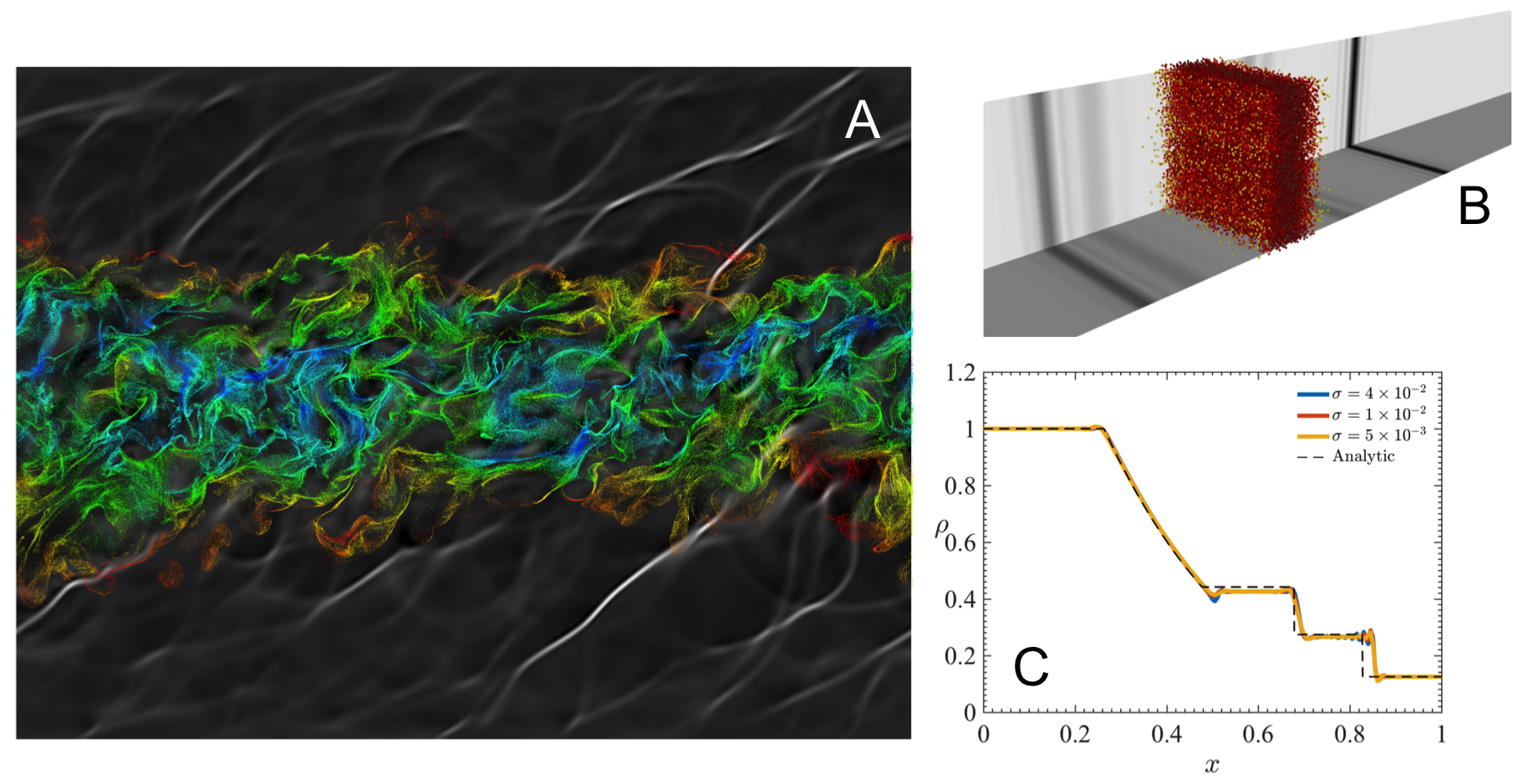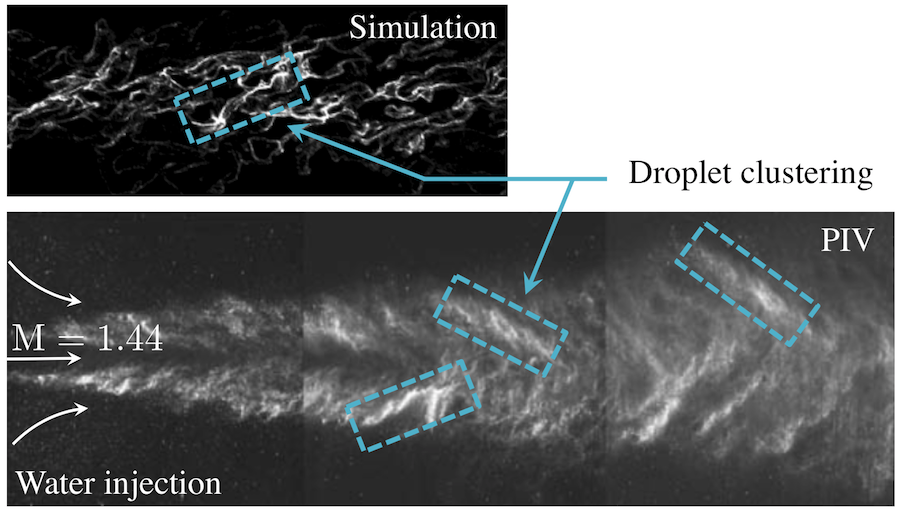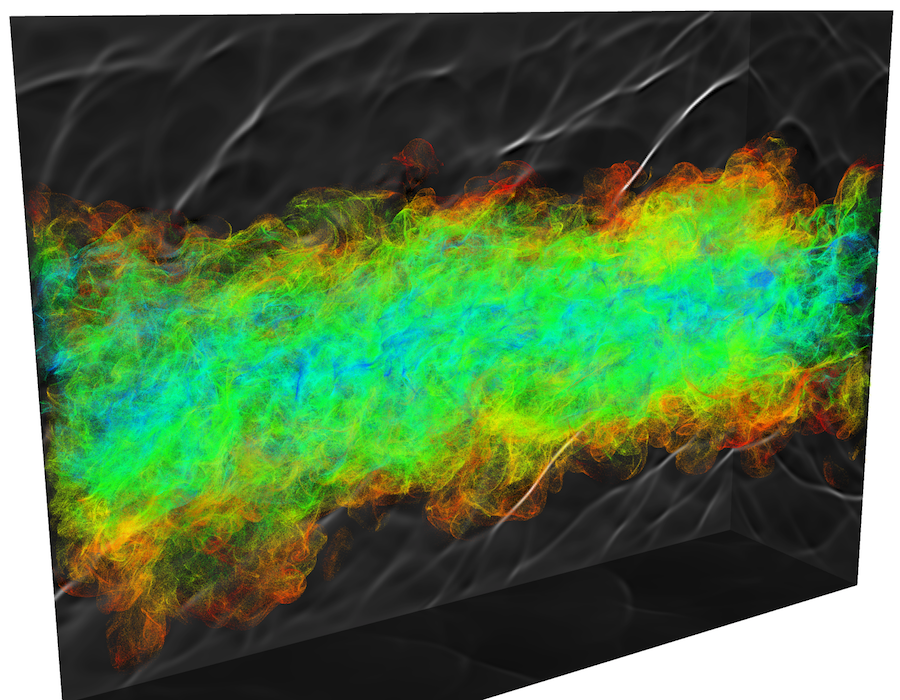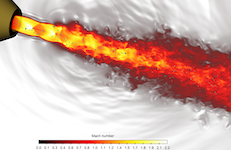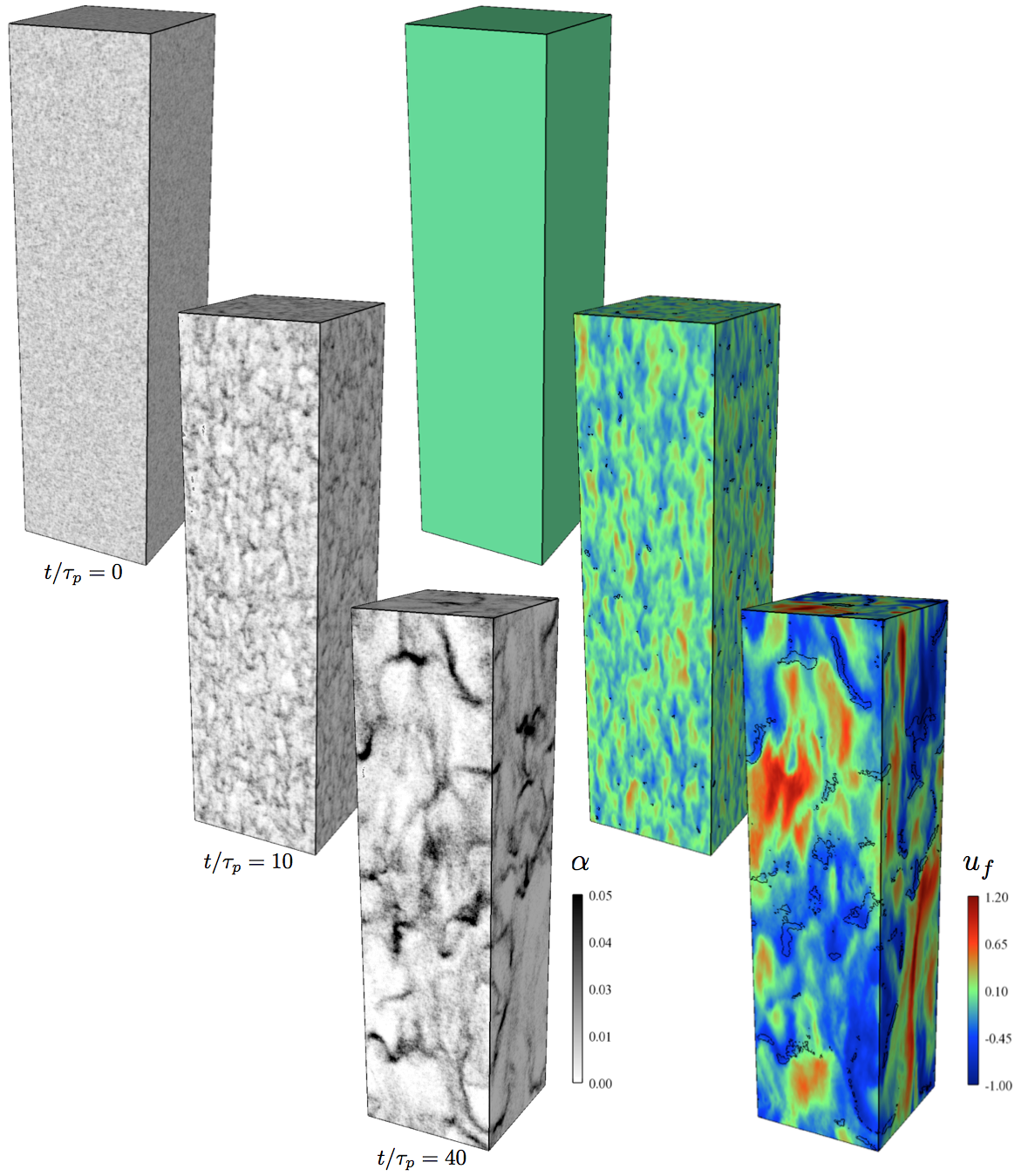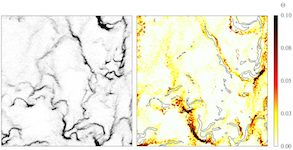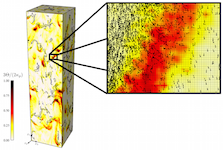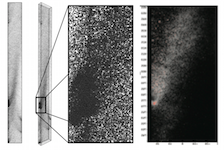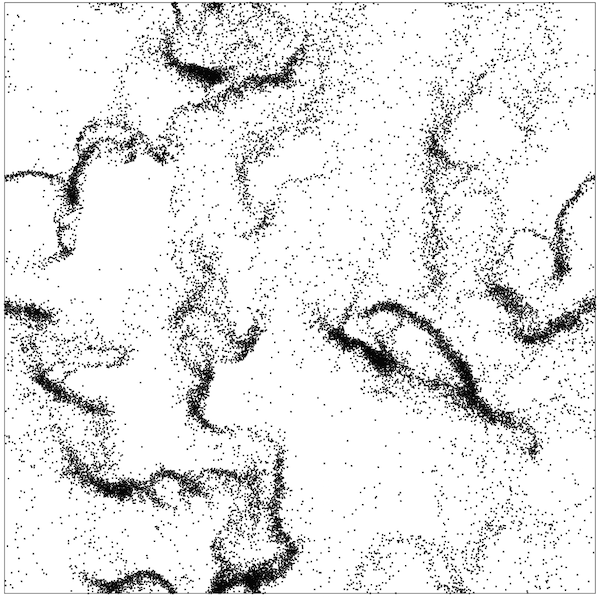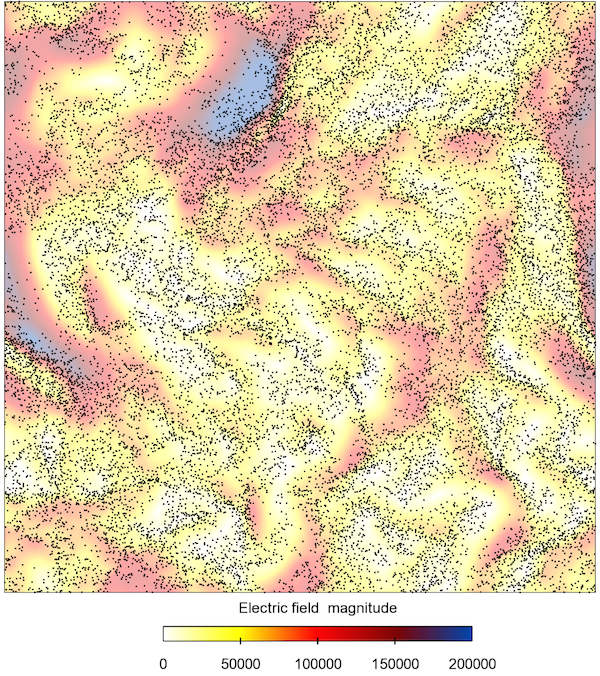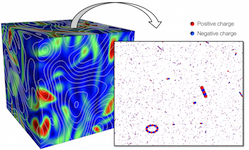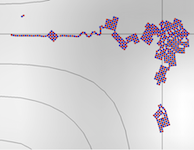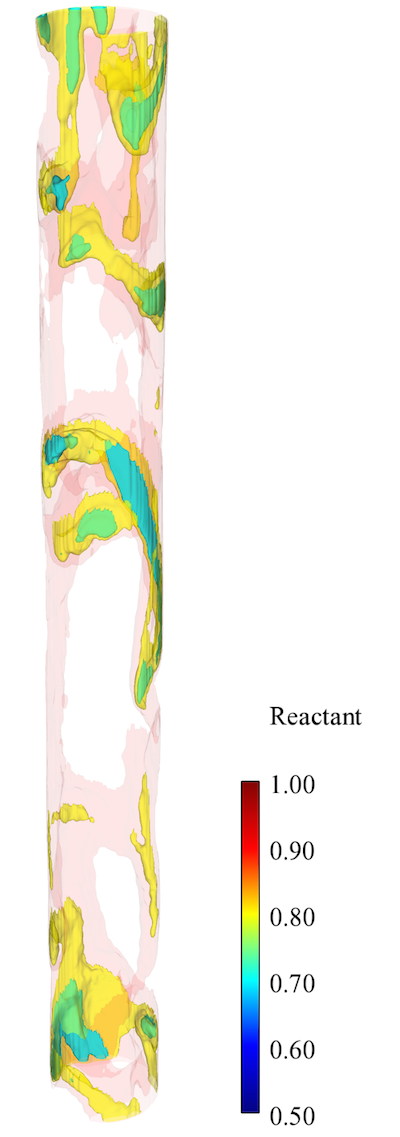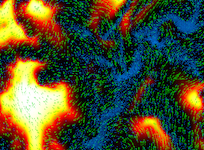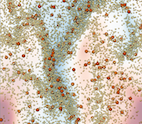|
|
Dispersed multiphase flows (solid particles suspended in a carrier phase, liquid droplets in gas, or gaseous bubbles in liquid) are commonly found in many engineering applications, and are often turbulent. These flows are ubiquitous in a range of energy conversion processes, and typically control device efficiencies and overall operating conditions. However, the complexities that arise from the chaotic nature of the background turbulent flow, coupled with a random assembly of interacting particles, makes understanding and predicting such flows very difficult. A main focus of our research involves developing robust and scalable numerical tools to investigate the multiphysics/multiscale phenomena in various flow conditions. Below are several examples of multiphase flow applications with both engineering and science objectives.





